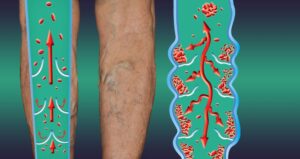Cancer is a devastating disease, and among all its forms, pancreatic cancer is one of the most aggressive and deadliest.
Even though it can be very difficult to detect, there are certain signs and symptoms to be especially aware of.
The 10th most common cancer
Pancreatic cancer is a type of cancer that affects the pancreas, a vital gland for digestion. It is located deep in the abdomen, near the stomach and small intestine.
Pancreatic cancer makes up approximately 3% of all cancers in the United States and is responsible for about 8% of all cancer-related deaths.
In its early stages, it may present no symptoms or only vague ones. As a result, it is often detected late, by which time it has already spread in most cases.

According to the Cleveland Clinic, pancreatic cancer is more common in women than in men. While it ranks as the 10th most common cancer among American men, it climbs to the eighth spot for women.
As mentioned, pancreatic cancer can be difficult to detect early, but certain symptoms may signal a problem. Many people experience persistent pain in the stomach or back, unexplained weight loss, and digestive issues, including a reduced appetite. One of the more noticeable signs is jaundice — when the skin and the whites of the eyes turn yellow due to a blocked bile duct. If you notice these symptoms, it’s important to seek medical advice.
Lesser-known symptoms
One of the most well-known figures to have sadly passed away from pancreatic cancer was actor Patrick Swayze. He recalled a troubling experience around New Year’s Eve when drinking champagne felt like ”pouring acid” over an open wound. ”My indigestion issues got gigantic and constant. And then I started thinking, I’m getting skinny. I dropped about 20 pounds in the blink of an eye,” he said.
But pancreatic cancer can also bring unexpected, lesser-known symptoms. Weight loss and jaundice often come to mind, but there are other, less obvious signs that could be early red flags.
According to American Cancer Society, some additional symptoms include indigestion, nausea, diabetes, itching, fever, and even shivering. One particularly concerning symptom? Blood clots.
In fact, pancreatic cancer is one of the cancers most likely to cause blood clots, with up to 36% of patients experiencing clotting complications.
Another alarming symptom
”Sometimes, the first clue that someone has pancreatic cancer is a blood clot in a large vein, often in the leg,” the organization explains.
”This is called a deep vein thrombosis or DVT. Symptoms can include pain, swelling, redness, and warmth in the affected leg. Sometimes a piece of the clot can break off and travel to the lungs, which might make it hard to breathe or cause chest pain. A blood clot in the lungs is called a pulmonary embolism or PE.”

While pancreatic cancer is one possible cause, blood clots themselves can be deadly. If you notice pain, redness, swelling, or warmth around a clot, or experience breathlessness, chest pain, or upper back pain, Cancer Research UK warns that you should ”contact your healthcare team right away.”
Another alarming symptom? Coughing up blood — this could indicate that a clot has worsened and requires immediate medical attention.
By staying informed and paying attention to your body, you can take proactive steps toward better health.
If something doesn’t feel right, don’t hesitate to get checked.




